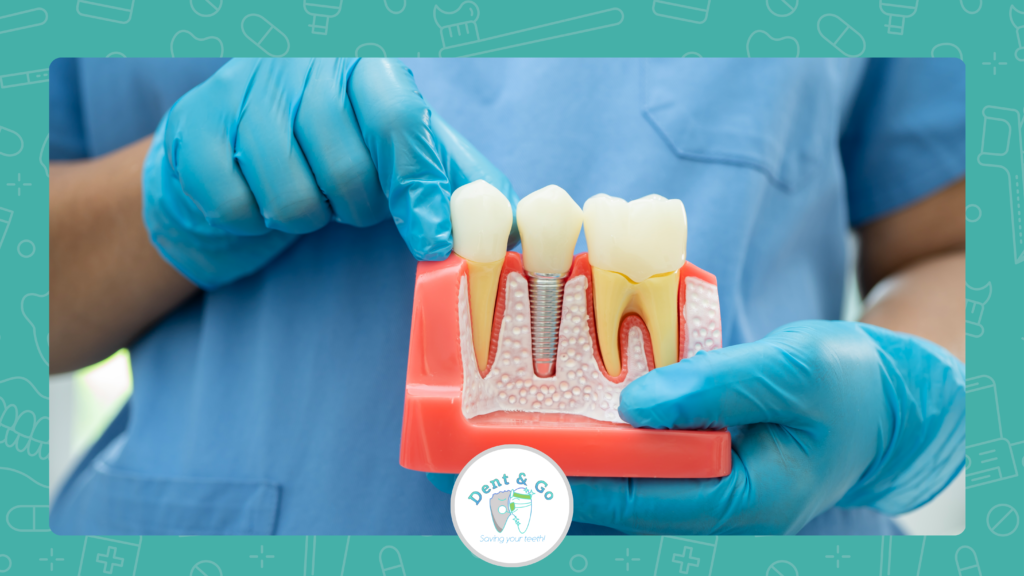Exposed Tooth Root: Causes and Symptoms
Taking care of our teeth is vital for overall health, but sometimes issues can arise that catch us off guard. One such problem is exposed tooth roots, which can cause sensitivity and discomfort. Let’s delve into what causes this condition, the symptoms to look out for, and how we can treat and prevent it.
What is an Exposed Tooth Root?
An exposed tooth root happens when the gum tissue recedes, revealing the tooth’s root. Unlike the enamel-covered crown, the root is only protected by a thin layer of cementum, making it more prone to decay and sensitivity. If not addressed, exposed roots can lead to discomfort and further dental issues.
Causes of Exposed Tooth Roots
There are several reasons why your gums might recede and expose your tooth roots:
1. Gum Disease (Periodontal Disease) : Periodontal disease is a leading cause of gum recession. This infection damages gum tissue and the bone supporting the teeth, causing gums to recede.
2. Brushing Too Hard : Using a hard-bristled toothbrush or brushing aggressively can wear down the gum tissue, leading to recession.
3. Poor Oral Hygiene : Not brushing and flossing properly can lead to plaque buildup, which can harden into tartar. Tartar at the gum line can cause gums to recede.
4. Genetics : Some of us are just more prone to thinner gum tissue, making us more susceptible to gum recession.
5. Hormonal Changes : Hormonal changes during pregnancy, menopause, or menstruation can make gums more sensitive and prone to recession.
6. Tobacco Use : Smoking or using tobacco products can impair blood flow to the gums, weakening them and increasing the risk of recession.
7. Misaligned Teeth or Bite : Misaligned teeth or an improper bite can put excessive pressure on the gums, causing them to recede over time.
8. Teeth Grinding (Bruxism) : Chronic grinding or clenching of teeth can exert too much force on the gums, contributing to recession.
Symptoms of Exposed Tooth Roots
Knowing the symptoms of exposed tooth roots is essential so you can seek treatment early. Common symptoms include:
1. Tooth Sensitivity : You might notice increased sensitivity to hot, cold, sweet, or acidic foods and drinks. The exposed root lacks the protective enamel, making it more sensitive.
2. Visible Roots : Your teeth might appear longer than usual, or you might see the roots above the gum line.
3. Discomfort or Pain : Exposed roots can cause sharp pain or discomfort, especially when brushing or flossing.
4. Gum Inflammation or Bleeding : Receding gums can become red, inflamed, or prone to bleeding during brushing or flossing.
5. Tooth Mobility : In severe cases, the loss of gum and bone support can lead to loose or shifting teeth.
Preventing Exposed Tooth Roots
Preventing exposed tooth roots is all about good oral hygiene and addressing issues early. Here are some steps to take:
1. Maintain Good Oral Hygiene : Brush twice a day with a soft-bristled toothbrush and fluoride toothpaste. Floss daily to remove plaque and prevent gum disease.
2. Regular Dental Check-ups : Visit your dentist regularly for professional cleanings and check-ups. They can spot early signs of gum recession and suggest treatments.
3. Use Proper Brushing Techniques : Don’t brush too hard. Use gentle, circular motions and hold your toothbrush at a 45-degree angle to the gums.
4. Quit Smoking : If you use tobacco, quitting can improve your gum health and reduce the risk of recession.
5. Address Teeth Grinding : If you grind your teeth, consider using a night guard to protect them and your gums.
6. Orthodontic Treatment : If misaligned teeth or bite issues are causing gum recession, orthodontic treatment may help.
Treatment for Exposed Tooth Roots
If you already have exposed tooth roots, don’t worry—there are several treatment options:
1. Desensitising Toothpaste : Special toothpastes can help reduce sensitivity by blocking the tubules in the dentine that lead to the nerves.
2. Fluoride Treatments : Your dentist can apply fluoride varnish or gel to the exposed roots to strengthen the enamel and reduce sensitivity.
3. Bonding : A tooth-coloured resin can be applied to the exposed root to protect it and reduce sensitivity.
4. Gum Grafting : In severe cases, a gum graft might be needed. This procedure involves taking tissue from another part of your mouth and attaching it to the receded area to cover the exposed root. The American Academy of Periodontology recommends root coverage procedures like gum graft surgery to reduce further gum recession and protect your roots from decay. Consult with your dentist or periodontist to see if this is the right option for you.
5. Scaling and Root Planing : A deep cleaning procedure that removes plaque and tartar from below the gum line, helping the gums reattach to the teeth.
6. Surgical Procedures : In advanced cases, surgical options like pocket depth reduction or regeneration can help restore gum health and cover exposed roots.
Exposed tooth roots can cause discomfort and lead to further dental problems if left untreated. By understanding the causes and symptoms, you can take proactive steps to maintain healthy gums and protect your teeth. Regular dental visits, good oral hygiene, and addressing underlying issues are essential for preventing and managing exposed tooth roots. If you notice any signs of gum recession, talk to your dentist promptly to get the best care for your oral health.

